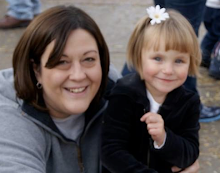Five ways to protect your family during cold and flu season
by: Dr. JJ Levenstein
Preventing Colds and Flu
- Bundle kids up and go outside instead of hanging out in germ-ridden indoor playgrounds, malls and other densely populated areas.
- Teach kids to wash their hands frequently with soap and warm running water for 20 seconds.
- Use disinfectant furniture wipes around surfaces such as doorknobs and shopping carts.
- Keep a sick child at home and avoid traveling until she’s feeling better–typically 24 hours after her fever is gone.
As a
pediatrician and mom, I know the flu often favors little ones who aren’t
overly concerned about catching a bug when they’re jumping into a ball
pit at an indoor playground. Fortunately, in addition to getting them
the flu vaccine, there are a number of things parents can do to keep
kids healthy and bug-free during cold and flu season.
1. Steer clear of indoor areas
Indoor areas that bring together a large number of people are a
hotbed for germs. That’s because the flu virus spreads easily when
respiratory droplets from an infected person’s cough or sneeze move
through the air to the mouth or nose of others in close proximity. If
possible, instead of frequenting areas such as indoor playgrounds or
malls, usher your kids outdoors to enjoy the fresh air if temperatures
aren’t too cold.
2. Cover mouths and wash hands
The flu is easy to catch when you touch your nose or mouth after touching respiratory droplets on another

person or object. Two of the best–and simplest–protective measures you
can teach your child are to wash her hands frequently and to cough or
sneeze into her elbow or shoulder if she doesn’t have a tissue handy.
The CDC recommends washing hands with soap and warm running water for
20 seconds. I also suggest keeping non-alcohol cleansing wipes, such as
MD Moms Cleansing Towelettes Travel Pouch,
on your child’s person at all times. When soap and water aren’t
available, this is a great alternative to alcohol-based hand sanitizers,
as their alcohol component can become a safety concern for babies and
children who often put their hands in their mouths.
3. Surround yourself with healthy people
As parents, it’s our job to prevent any germs that we come across
from infecting our children. This means doing our best to refrain from
coming into close contact with those who are sick. So if you’re visiting
friends or relatives and discover they’ve been unwell, your best bet is
to postpone your visit until everyone is feeling better.
4. Disinfect surfaces
It’s important to not only keep your hands clean, but also to keep
objects such as telephones, keyboards, toys and furniture clean–both
inside and outside the home. Use disinfectant furniture wipes around
surfaces such as doorknobs and shopping carts. A combination
detergent/disinfectant to clean and kill germs can be used on surfaces
that aren’t visibly dirty. When a surface is visibly dirty, use soap or
detergent, rinse with water, and then use disinfectant.
5. Keep sick little ones at home
If your child does get sick, keep her at home and avoid traveling
until she’s feeling better–typically 24 hours after her fever is gone.
This is especially important as young children may be contagious for
longer periods of time. Also, allow her to rest in a room away from the
main areas of the house so that you don’t put your family at risk for
catching her bug. In addition to rest, antiviral drugs can be used to
treat seasonal, or H1N1, flu.
Meet our expert:
Dr. JJ Levenstein is a board-certified pediatrician and fellow of the
American Academy of Pediatrics with a private pediatric practice in
Encino, Calif. She serves on the clinical staff of two hospitals and has
been consistently voted one of the Best Doctors in America® from 2003
through 2008. Drawing from her experience as a pediatrician and mom, Dr.
Levenstein serves as president and co-founder of MD Moms, makers of
Baby Silk, the first personal care line for babies developed by
pediatrician moms.
 person or object. Two of the best–and simplest–protective measures you
can teach your child are to wash her hands frequently and to cough or
sneeze into her elbow or shoulder if she doesn’t have a tissue handy.
person or object. Two of the best–and simplest–protective measures you
can teach your child are to wash her hands frequently and to cough or
sneeze into her elbow or shoulder if she doesn’t have a tissue handy.










No comments:
Post a Comment